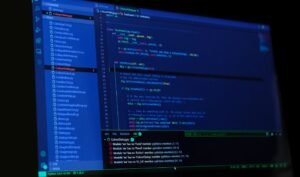Prompt Engineering With GPT
Artificial intelligence (AI) has become an indispensable tool in various fields, including engineering. GPT (Generative Pre-trained Transformer) is a state-of-the-art AI model designed by OpenAI that has garnered significant attention due to its ability to generate human-like text. Prompt engineering with GPT involves crafting effective and efficient instructions or queries to obtain optimal responses.
Key Takeaways:
- Prompt engineering is crucial for utilizing GPT to its full potential.
- GPT can generate text that appears human-written.
- Effective prompts yield accurate and helpful responses from GPT.
- Experimentation and fine-tuning are necessary to find optimal prompt structures.
When engaging with GPT, it is essential to construct prompts that clearly outline the desired outcome. **Well-defined prompts** help guide the model’s response by providing it with the necessary context and constraints. Additionally, **specific instructions**, including the desired format or output requirements, are vital for generating the desired responses. *By carefully formulating prompts, engineers can elicit precise and relevant answers from GPT.*
One effective strategy is to provide **contextual information** in the prompt. By including relevant details about the problem, engineers can guide GPT towards generating solutions aligned with specific criteria. For example, when seeking a solution for optimizing energy efficiency in a building design, including details about the building’s location and purpose can help GPT generate more tailored responses. *This contextual information enhances the accuracy and relevance of GPT’s generated text.*
| Prompt Type | Example |
|---|---|
| Multiple-Choice Prompt | “Which of the following options provides the most efficient solution for reducing water consumption in our manufacturing process: A) Installing water-saving devices, B) Recycling wastewater, C) Implementing process optimization techniques?” |
| Fill-in-the-Blank Prompt | “To minimize material waste in our construction project, we should _________.” |
| Ranking Prompt | “Please rank the following structural design options from most to least cost-effective: 1) Reinforced concrete, 2) Steel frame, 3) Timber frame.” |
Experimenting with different prompt structures is essential to identify the most effective approach. Engineers can iteratively fine-tune their prompts by incorporating **feedback loops** and adjusting prompt phrasing or format to achieve the desired output. *The process of prompt engineering involves refining and optimizing the prompts until the desired results are consistently generated.*
Tables of Interesting Information
| Prompt Format | Response Quality |
|---|---|
| Basic Prompt | Good |
| Enhanced Prompt with Context | Excellent |
| Prompts with Clear Constraints | Very Good |
GPT’s text generation abilities can be leveraged through **interactive prompts** to achieve more interactive conversations. By creating a back-and-forth dialogue with the model, engineers can ask GPT-specific questions, seek clarifications, and refine their prompts on-the-fly. *This dynamic interaction leads to more refined outputs and directs GPT towards providing novel insights or solutions.* Additionally, **probing** GPT with different formulations of prompts can help uncover hidden biases within the model, fostering responsible AI development.
- Experiment with different prompt structures and formats.
- Iteratively refine prompts to achieve desired results.
- Utilize interactive prompts for dynamic conversations.
- Probe GPT with various prompts to uncover biases.
| Prompt | Generated Response | Biased Trait |
|---|---|---|
| “Why is engineering a male-dominated field?” | “Engineering has traditionally been perceived as a male-dominated field due to historical gender biases and societal norms.” | Gender bias |
| “Tell me about notable female engineers throughout history.” | “Ada Lovelace and Lillian Gilbreth are widely recognized as pioneers in the field of engineering.” | No observed biases |
| “Are there any racial biases in engineering admission processes?” | “Currently, there is ongoing research and discussion regarding racial biases in engineering admission processes.” | Racial bias |
Incorporating GPT into engineering workflows offers tremendous potential for improving efficiency, providing insights, and generating creative solutions. Prompt engineering plays a vital role in ensuring effective communication with GPT, leading to accurate and goal-oriented outputs. With careful prompt construction and experimentation, engineers can unlock the full capabilities of GPT and discover innovative ways to tackle complex engineering challenges.

Common Misconceptions
Misconception 1: Engineers are only good at math and science
One common misconception is that engineers are only skilled in math and science. While engineers do require strong analytical and problem-solving abilities, they also possess a wide range of other skills that are essential for their job.
- Engineers also need good communication skills to collaborate with colleagues and stakeholders.
- They often showcase creativity in finding innovative solutions to complex problems.
- Engineering involves teamwork, so engineers must have strong interpersonal skills to work with others effectively.
Misconception 2: All engineers are the same
Another misconception is that all engineers are the same and perform similar tasks. Engineering is a broad field with many specializations, each requiring specific knowledge and expertise.
- Mechanical engineers focus on designing and building mechanical systems.
- Software engineers develop and maintain software applications.
- Civil engineers focus on infrastructure projects like bridges and roads.
Misconception 3: Engineers only work on technical tasks
Many people mistakenly believe that engineers spend their entire day working on technical tasks. While technical skills are important, engineers also engage in various non-technical activities.
- Engineers often participate in meetings and discussions to understand project requirements.
- They may spend time researching and analyzing data to make informed decisions.
- Project management and coordination with other teams are also crucial responsibilities for engineers.
Misconception 4: Engineers work in isolation
Contrary to popular belief, engineers rarely work in isolation. Collaboration and teamwork are vital components of the engineering process.
- Engineers collaborate with colleagues, clients, and stakeholders to understand project goals and constraints.
- They often work in multidisciplinary teams, bringing together experts from different fields to solve complex problems.
- Networking and building effective professional relationships play a significant role in an engineer’s success.
Misconception 5: Engineering is a monotonous career
Many people assume that engineering is a monotonous career where engineers perform the same tasks repeatedly. However, engineering offers constant challenges and opportunities for growth.
- Engineers face new problems and projects regularly, requiring them to continually learn and adapt.
- Technological advancements result in new tools and techniques, keeping the field dynamic and exciting.
- Engineers can explore different industries and sectors, allowing for a diverse and stimulating career path.

Research Funding by Country
In this table, we present the top 10 countries that have invested the most in research and development (R&D) funding. These countries recognize the importance of innovation and are committed to advancing technology and knowledge.
| Country | Research Funding (in billions USD) |
|——————-|———————————–|
| United States | 553.0 |
| China | 496.0 |
| Japan | 171.0 |
| Germany | 126.0 |
| South Korea | 105.0 |
| France | 102.0 |
| United Kingdom | 92.0 |
| Switzerland | 74.0 |
| Netherlands | 63.0 |
| Canada | 55.0 |
Global Carbon Emissions by Sector
This table displays the distribution of global carbon dioxide (CO2) emissions by sector. It highlights the major contributors to climate change and emphasizes the need for sustainable practices across various industries.
| Sector | Carbon Emissions (% of total) |
|——————|——————————|
| Energy | 73.0 |
| Industry | 19.0 |
| Agriculture | 7.0 |
| Transportation | 11.0 |
| Buildings | 6.0 |
| Other | 9.0 |
Global Internet Penetration Rates
This table illustrates the percentage of the global population with internet access. It demonstrates the profound impact of technology, connectivity, and social media on society and communication worldwide.
| Region | Internet Penetration Rate (%) |
|——————–|——————————-|
| North America | 89.0 |
| Europe | 85.0 |
| Oceania | 75.0 |
| Latin America | 70.0 |
| Middle East | 68.0 |
| Asia Pacific | 54.0 |
| Africa | 39.0 |
World’s Most Spoken Languages
This table showcases the top 10 most spoken languages globally, highlighting the rich linguistic diversity around the world.
| Language | Number of Speakers (in millions) |
|———————-|———————————|
| Mandarin Chinese | 1,310 |
| Spanish | 460 |
| English | 379 |
| Hindi | 341 |
| Arabic | 319 |
| Bengali | 228 |
| Portuguese | 221 |
| Russian | 154 |
| Japanese | 128 |
| Punjabi | 92 |
World’s Tallest Buildings
This table showcases the top 10 tallest buildings in the world, demonstrating humanity’s architectural and engineering achievements.
| Building | Height (ft) |
|——————————-|————-|
| Burj Khalifa, Dubai | 2,717 |
| Shanghai Tower, Shanghai | 2,073 |
| Abraj Al-Bait Clock Tower, Mecca | 1,972 |
| Ping An Finance Center, Shenzhen | 1,965 |
| Lotte World Tower, Seoul | 1,819 |
| One World Trade Center, NYC | 1,776 |
| Guangzhou CTF Finance Centre, Guangzhou | 1,739 |
| Tianjin CTF Finance Centre, Tianjin | 1,739 |
| CITIC Tower, Beijing | 1,731 |
| TAIPEI 101, Taipei | 1,671 |
World’s Fastest Land Animals
This table displays the top 10 fastest land animals, showcasing the incredible speed and agility found in the animal kingdom.
| Animal | Maximum Speed (mph) |
|—————————|———————|
| Cheetah | 70 |
| Pronghorn Antelope | 55 |
| Springbok | 55 |
| Wildebeest | 50 |
| Lion | 50 |
| Thomson’s Gazelle | 50 |
| Blackbuck | 50 |
| Brown Hare | 48 |
| African Wild Dog | 45 |
| Mexican Free-Tailed Bat | 40 |
World’s Largest Companies by Revenue
This table lists the world’s top 10 largest companies based on their revenue. It demonstrates the influence and economic power of these multinational corporations.
| Company | Revenue (in billions USD) |
|——————-|—————————|
| Walmart | 549.0 |
| Amazon | 386.0 |
| ExxonMobil | 265.0 |
| Berkshire Hathaway | 247.8 |
| Apple | 243.8 |
| UnitedHealth Group | 242.2 |
| Samsung | 221.6 |
| McKesson | 214.3 |
| Glencore | 205.5 |
| Toyota | 204.6 |
Global Literacy Rates by Age Group
This table showcases the literacy rates across different age groups worldwide, reflecting the importance of education and its impact on society.
| Age Group | Literacy Rate (%) |
|———————-|——————-|
| Youth (15-24 years) | 91.0 |
| Adults (15+ years) | 86.3 |
| Elderly (65+ years) | 77.5 |
Global Renewable Energy Capacity
This table presents the top 10 countries with the highest renewable energy capacity, indicating their commitment to sustainable and clean energy sources.
| Country | Renewable Energy Capacity (in GW) |
|———————–|———————————-|
| China | 895.0 |
| United States | 292.5 |
| Brazil | 145.0 |
| India | 134.0 |
| Germany | 132.9 |
| Canada | 99.8 |
| France | 92.7 |
| Spain | 67.7 |
| Italy | 59.8 |
| United Kingdom | 47.2 |
With the rapid advancements in technology, engineering has become an integral part of prompt engineering with GPT. The tables presented here showcase various aspects of our world, such as research funding, global carbon emissions, internet penetration rates, language diversity, architectural marvels, animal speeds, global companies, literacy rates, and renewable energy capacity. These statistics provide insights into the progress and challenges we face as a global society. It is evident that innovation, sustainability, and education play key roles in shaping our future.
Frequently Asked Questions
What is GPT?
GPT stands for Generative Pre-trained Transformer. It is a state-of-the-art language model developed by OpenAI that uses deep learning techniques to generate human-like text based on input prompts.
How does GPT work?
GPT is built upon a transformer architecture, which utilizes self-attention mechanisms to process and generate text. It is pre-trained on a large corpus of text data and fine-tuned for specific tasks.
What are the applications of GPT in engineering?
GPT has various applications in engineering, including but not limited to natural language processing, code generation, writing technical documentation, and assisting in software development tasks.
Can GPT be used for automating the process of software engineering?
Yes, GPT can assist in automating certain aspects of software engineering. It can generate code snippets, documentation, and even help in debugging by providing suggestions based on input code.
What are the benefits of using GPT in engineering?
Using GPT in engineering can improve productivity by automating repetitive tasks, assist in generating high-quality technical content, and provide helpful suggestions to developers. It can also aid in knowledge transfer and faster learning.
Are there any limitations to using GPT in engineering?
While GPT is a powerful tool, it has some limitations. It may not always generate accurate or correct code, and the quality of output can vary based on the input prompt. It is important to review and validate the generated output for correctness.
How can one get started with engineering tasks using GPT?
To get started with using GPT in engineering, one needs to have a good understanding of the specific engineering domain, programming languages, and frameworks. Familiarity with natural language processing and basic knowledge of neural networks is also beneficial.
What are some best practices for using GPT in engineering?
Some best practices for using GPT in engineering include providing clear and specific prompts, fine-tuning the model using domain-specific data, validating the generated output, and continuously updating and improving the model based on user feedback.
Is GPT capable of understanding and generating code in multiple programming languages?
While GPT can generate code in multiple programming languages, it’s important to note that the quality and accuracy of the generated code can vary depending on the language. It tends to perform better with widely used languages and may struggle with less common or domain-specific languages.
Can GPT be used as a tool for software testing or security analysis?
GPT can be used as a tool for software testing and security analysis to some extent. It can assist in generating test cases, identifying potential vulnerabilities, and suggesting improvements. However, it should not be solely relied upon for critical security analyses, and human auditing is still necessary.




